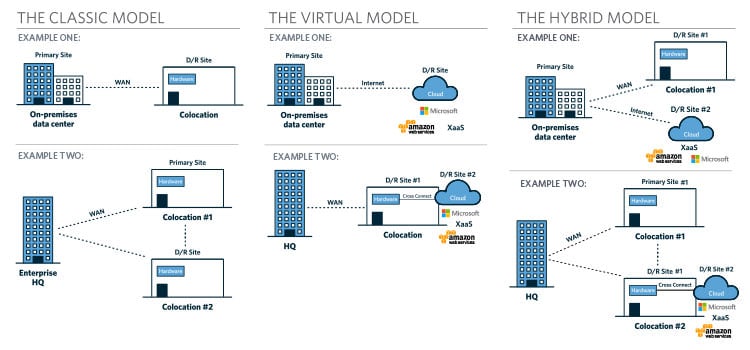
Avoid Downtime - 3 Types of Cloud and Colocation Models to Know
Did you know that the amount and cost of downtime has increased over the past few years? It’s counterintuitive, almost as surprising as the fact that 25 percent of all unplanned data center outages are attributed to uninterruptible power supply (UPS) battery failure.¹ Sometimes, the devil really is in the details. Like when an erroneous command caused the Amazon S3 service outage February 28th, 2017.² Just query #S3outage to get a sense of panic when thousands of sites go down – but not until you’ve finished reading this post!
Systems fail. Mistakes happen. It’s how you plan ahead and recover that matters. The shift to XaaS and mobile applications means that 100 percent uptime is literally mission-critical. Fortunately, foundational cloud technologies are maturing, and that includes business continuity/disaster recovery (BC/DR) strategies.
Just as you needed (or need) to evaluate which cloud deployment model – public, private or hybrid – is ideal for your enterprise, you now also need to consider which of these new BC/DR models aligns best with how you do business today, and where you want to go. Details aside, these are:

- The Classic Model—A hardware-centric strategy that represents the way BC/DR traditionally has been implemented. Mirrored hardware assets are housed in geographically diverse locations and scheduled or synchronous data replication occurs between the sites.
- The Virtual Model—Enterprises house data and applications on a dedicated, virtualized server environment – either on-premises or in a colocation facility – and leverage cloud based backup and/or DR solutions.
- The Hybrid Model—This bimodal approach is a combination of the classic and virtual models, with enterprises backing up some applications in dedicated colocation environments and other applications in the cloud.
Colocation is not only key for eliminating the risk created with a "single point of failure," a tenet of all three models, colocation ensures uptime for your physical backup and provides low-cost, high-performance access to clouds, networks and other providers that you may need to leverage when building a virtualized BC/DR solution. And the bonus is that enterprises benefit from as much 2-3X reduced latency and 60-70% reduced outbound data transfer costs through connecting to cloud providers via direct connect within a colocation facility.
Of course, evaluating how each BC/DR model aligns with your business objectives is step one. We’ve developed a whitepaper, Best Practices: Leveraging Cloud and Colocation to Avoid Downtime to help you decide which model for avoiding downtime makes sense. It’s available here.
References
¹ 02016 Cost of Data Breach Study: Global Analysis, Ponemon Institute, June 2016
² Summary of the Amazon S3 Service Disruption in the Northern Virginia (US-EAST-1) Region aws.amazon.com/message/41926/









